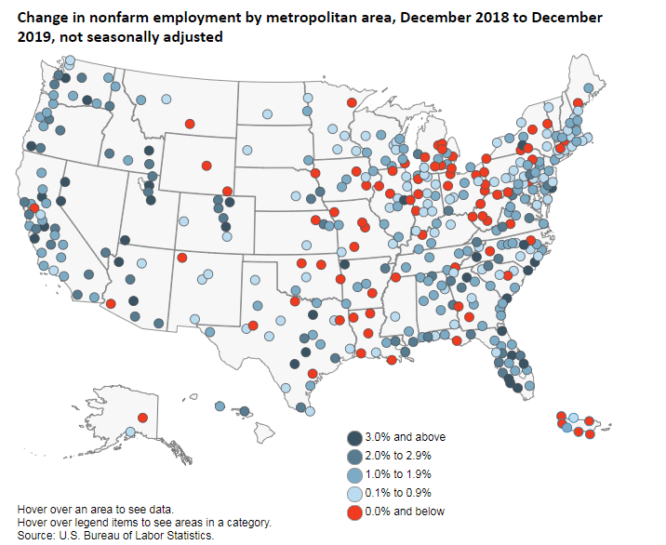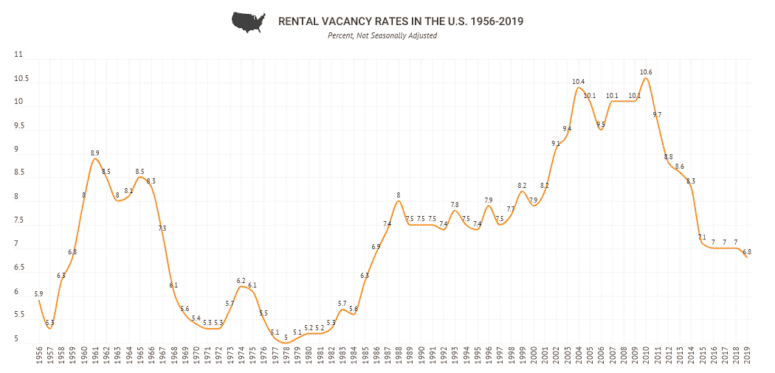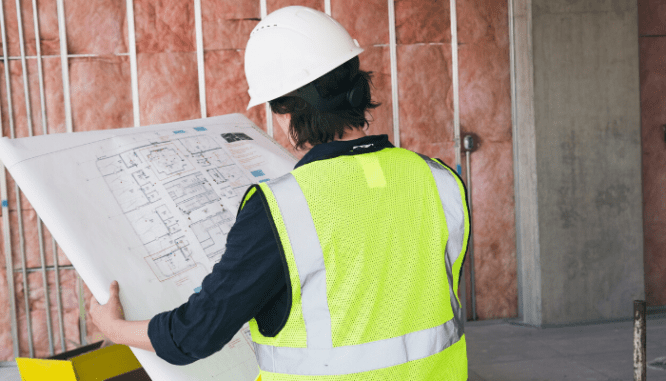Where to Invest in Real Estate: 8 Factors That Make a Location Great for Rentals
- Published on
- 6 min read
-
 Christine Bartsch Contributing AuthorClose
Christine Bartsch Contributing AuthorClose Christine Bartsch Contributing Author
Christine Bartsch Contributing AuthorFormer art and design instructor Christine Bartsch holds an MFA in creative writing from Spalding University. Launching her writing career in 2007, Christine has crafted interior design content for companies including USA Today and Houzz.
At HomeLight, our vision is a world where every real estate transaction is simple, certain, and satisfying. Therefore, we promote strict editorial integrity in each of our posts.
The location of your rental property is the one thing you can’t change. Sink investment capital into a neighborhood where you’ll have difficulty keeping tenants, or in a location where you can’t charge enough rent to cover your monthly expenses, and you’ll live to regret the decision deeply.
“You do have to consider the whole picture before investing in real estate. Look for locations where there’s a housing need that hasn’t been met, or where rent affordability is an issue,” says top-selling Ephrata, Pennsylvania, real estate agent Jennifer King, who also specializes in investment properties.
So what makes a real estate market a great place to invest? Here are eight indicators that reveal key insights about an area, like whether it’s attracting new residents, if the rent you charge will cover your expenses, and how desirable the surroundings will be to potential tenants.

1. Rising population
Every month you go without a tenant paying rent, you’re stuck covering 100% of the mortgage, utilities, and upkeep — which will quickly put your investment into the red.
That’s why the first statistics that savvy investors look at are the population trends in the areas where they’re interested in making a rental property investment.
The U.S. Census Bureau generates reports that track state-to-state migration. Migration rates show what states are gaining or losing residents, which can be telling of an area’s overall activity and growth. For example, the national population growth rate is 3.5%. When the area you’re looking to invest in has a higher than the national average population growth rate, say 4% to 7%, that’s a good sign for general interest in the area which should often translate to rental demand.
2. Steady job growth
If a location’s most recent population statistics aren’t showing signs of growth, that doesn’t mean it won’t soon see a boom. Before passing on the location, do a little research into its job growth track record. Simply put, job growth tracks the number of jobs created in the country on a monthly basis.
Money makes the world go ‘round, so it’s only natural that people will soon flock to areas where jobs are available — and those employees will need a place to live.
“The businesses in the area can impact your investment location, as well, whether you’re in a college town, or you’ve got factories in the area,” explains King. “Some industries or companies bring in employees for only a year or two, so it’s a better option for them to rent a house rather than buy.”
You can turn to current employment statistics tabulated by the U.S. Bureau of Labor Statistics — numbers which are tracked nationally, by state, and by metropolitan area — making it one of the best indicators that a city is a good candidate for rental property investment.

Consider this chart of job growth patterns from December 2018 to December 2019. Areas with 0.9% growth or less are considered to have flat, or negative, growth. Areas with 2% to 3% growth are considered to have steady or high job growth.
3. Demand for rental homes and low vacancy rates
Population and job growth spikes won’t guarantee that you’ll have a pool of tenants clamoring to lease your rental home — especially if the location is already saturated with vacant apartments and other rental properties.
Experienced rental property investors look to the national vacancy rate, which gives a snapshot of the overall profitability of rental property investing.

These national stats are also broken down to vacancy rates on the state and city level. When a location has a low vacancy number, it’s a good indicator that the demand for rental properties is high in that area.
High demand for rental properties means that you’ll have an easier time finding a tenant. While the benchmark for high or low vacancy rates varies by area and property type, in general a 4% vacancy rate or less is considered low (i.e. a good place to invest), while a 7% vacancy rate or higher is considered high (i.e. a high-risk place to invest).
Once you narrow in on your top-potential markets, you’ll need to determine your target price-point and property type. And while it might seem practical to purchase smaller, economy, or midrange homes that’ll appeal to the widest pool of buyers, you shouldn’t discount luxury properties without doing your research on market trends.
“In Lancaster, Pennsylvania, there aren’t many high-end properties available for rent, and we have industries here that are constantly bringing in people looking for executive rentals,” explains King.
“In markets like ours, it makes sense to think outside the box and consider the untapped luxury market, versus buying two or three smaller properties.”
4. Solid return potential, either from a rent or appreciation perspective
One hard and fast rule property investors play by is this: Only buy properties that will rent out for more than the monthly housing expenses (mortgage, utilities, upkeep, etc.).
After totaling the housing costs on your rental property, you’ll have an idea how much you’d need to charge to cover your expenses and still turn a profit in each location you’re considering. Next, you’ll need to check the rent trends in those locations, which you can find on sites like Apartment List and Apartment Guide.
However, not all real estate investments pay off in the same way. One big decision you need to make before picking a location is how you want your investment to earn for you: in monthly income or overall appreciation.
“Some investors prefer to purchase in urban areas where the property appreciation isn’t as great based on location, but the rental rates are significantly higher than in suburban areas,” explains King.
“On the other hand, sometimes investors go for locations where the rent is lower and the mortgage is higher, so your monthly income isn’t as good, but the property appreciation is better.”
If you’re more interested in choosing a location based on the potential for property appreciation, it may make sense to invest in a property where you’re barely breaking even each month. While you won’t make as much on a monthly basis, you’ll make it back in equity when you sell the property.
Plus, as the owner, your monthly mortgage payment will stay the same, but as the landlord, you’ll be able to make annual rent increases to grow your monthly profit margins over time.

Where to invest on the neighborhood level
Picking the right city with a hot real estate market is only half the battle. Once you’ve selected the general location, you need to figure out which neighborhoods will be the most attractive for renters or the most likely to appreciate long-term. The four main factors you need to consider when picking a specific location for your property investment are: Desirability, centrality, future development plans, and neighborhood/house aesthetic.
5. Access to local activities and offerings
As a rental property owner, you’re competing for tenants with apartment complexes and condo associations that have an attractive assortment of onsite amenities like exercise rooms, swimming pools, and active communities.
You don’t have to install features like these to compete, but you do need to choose a rental house in a desirable neighborhood. Search out locations that have features like these:
- Community centers (Featuring amenities like tennis courts, pools, and gyms)
- Low crime (Review local government sites or this Community Crime Map; Simply select a city or type in a specific address to see a map of recent crimes in the area)
- Well-maintained streets, sidewalks, and foliage
- Good schools (Check out school ratings and reviews on sites like Niche)
- Community activities (Look for community message boards online or the lifestyle section of the local paper for events like festivals and farmer’s markets)
6. Centrality and convenience
Consider a property’s proximity to businesses, amenities, and attractions before you invest. Open your favorite map app and check the distance to neighborhood features like these:
- Public parks (Check out the ratings of nearby parks with this 2019 ParkScore® Index)
- Grocery stores
- Restaurants
- Shopping centers
- Public transportation
Don’t just check the distance; Pay attention to the routes your tenants will need to take to get to these places. For example, most tenants won’t consider a grocery store that’s only three miles away conveniently located if they need to take the freeway to get to it.
The centrality and convenience required of a rental house does depend on whether you’re looking to make your property into a short-term or long-term rental.
There are a number of long-term renters who’ll accept a longer commute to work and amenities for the peace and privacy of a rental home in a suburb. But if your target renters are tourists, a central location is a must-have.
“I personally own an Airbnb at the moment, and you have to definitely understand the short-term rental game before you purchase a property for that purpose,” explains King. “You need to consider things like accessibility, proximity to tourist attractions, and the convenience of public transportation.”

7. Exciting plans for surrounding development
There is a case to be made for buying rental properties in areas that aren’t centrally located or situated in vibrant, active neighborhoods — if the surrounding area is scheduled to be developed or revitalized in the near future.
“Up-and-coming areas are great for investors if they can get in ahead of when the neighborhood becomes popular, and the property values skyrocket,” says King. “Zoning boards and municipalities will have records of any new industries that are coming in or any construction projects that might impact growth in the area where you’re looking to invest.”
When you’re taking the risk of buying rental property in an up-and-coming location, you need to triple-check that your rental house will appeal to the renters most likely to migrate to the area. For example, if you’re house hunting near a tech development creating six-figure jobs, you wouldn’t want to purchase a modest, two-bedroom home when most of those new renters will be looking for luxury properties.
8. Great curb appeal and an appealing neighborhood aesthetic
Don’t rely solely on your online research once you’re narrowing down to a specific neighborhood. You need to experience the area in person.
“It’s a smart idea to drive by the locations where you’re considering investing at different times of the day and week to research the neighborhood,” advises King.
For example, a street may look like it has plenty of parking at noon on a weekday, but if you drive it again at 6:00 p.m., the curbs become crammed with parked cars.
Parking availability isn’t the only factor you need to evaluate. Pay attention to the overall neighborhood aesthetic, including:
- Street condition and city landscaping (Numerous potholes and unkempt vegetation is a clear sign the neighborhood is neglected)
- Neighbors’ curb appeal (Well-kept front yards are a good sign that you’ve got good neighbors)
- Noise levels (Are the streets quiet after dark, or do you have college-age party-throwers living next door?)
- How the property you’re considering looks from the street (tenants will care about curb appeal!)
Need reliable information on great rental investment locations? Ask your agent
Processing all of the information you need to make a smart decision on a rental property is daunting, especially if you’re new to real estate investing. But you can always work with an investor-friendly agent to find an ideal investment property location.
“Seasoned agents know the market well, so they know where growth is currently happening and where it’s anticipated in the near future,” says King. With the right data and assistance, you’re well on your way to success.
Header Image Source: (Nattanan Kanchanaprat / Pixabay)
